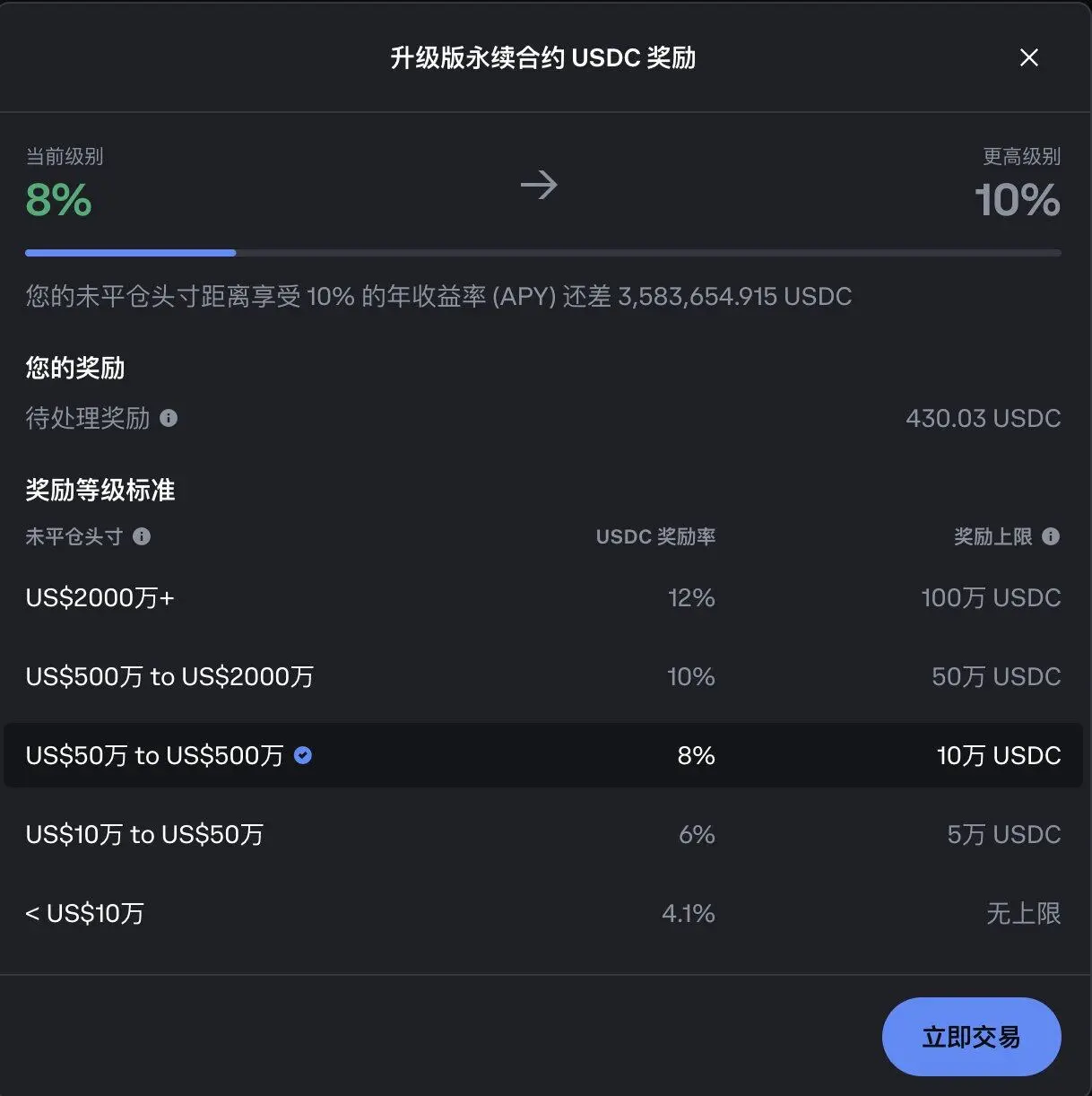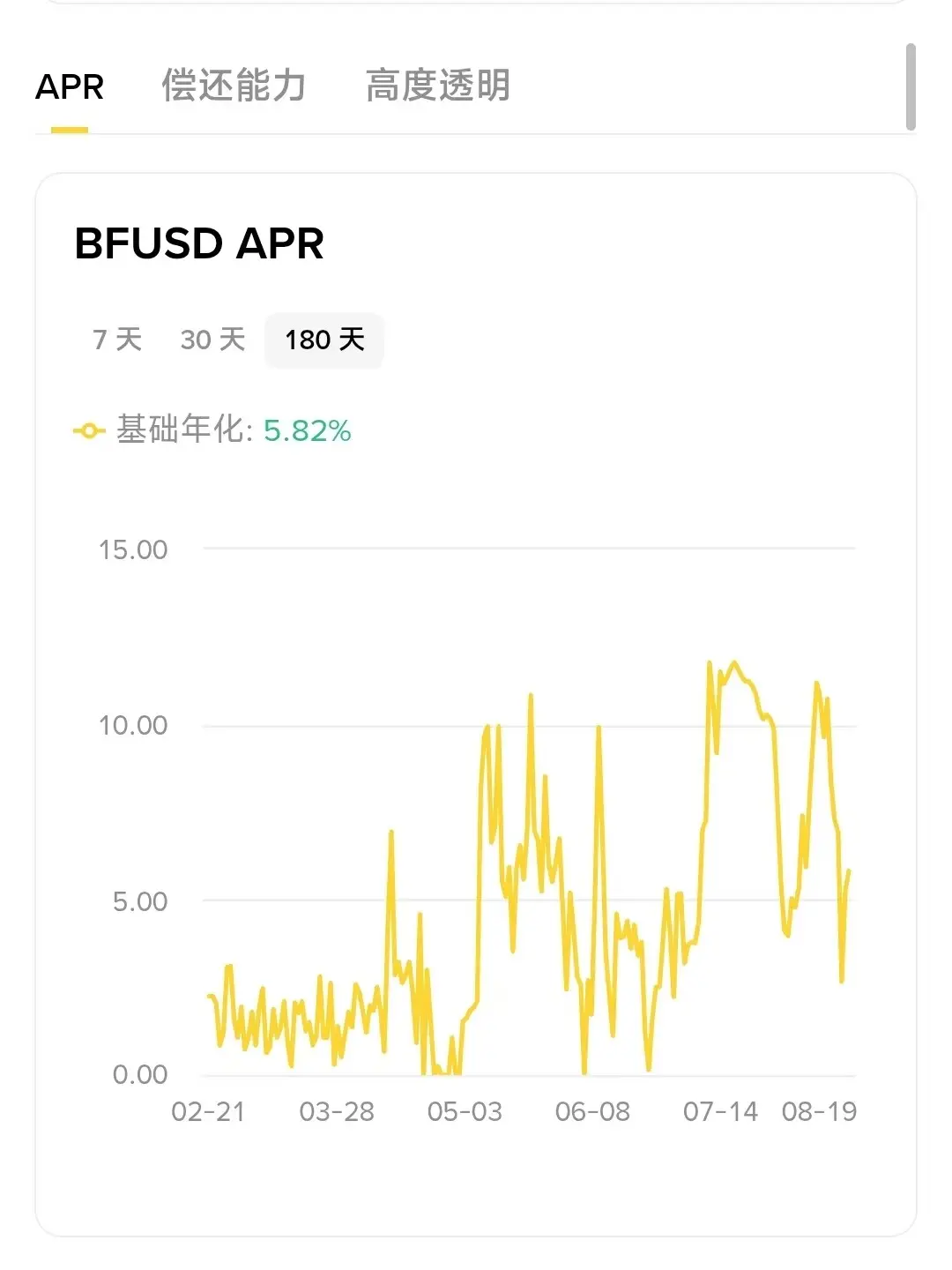Author: Azuma, Odaily Planet Daily
Today, a piece of news regarding "Coinbase updates derivatives rules, offering tiered subsidies for USDC used as collateral, with annualized subsidies reaching up to 12%" has sparked widespread discussion in the community.
KOL benmo.eth from the Chinese community was the first to disclose this update on X, commenting: “This product directly targets funding fee products like BFUSD and USDE. In the current low-fee environment, the rewards have already turned against us. For example, if you have a margin of 1 million USDC and open a long position worth 2 million in BTC, your margin of 1 million USDC naturally earns an annualized return of 8%; if your margin is 10 million USDC and you open a contract worth 20 million, then your 10 million USDC will receive an annualized return of 12%. As competition in derivatives intensifies, Circle, in collaboration with Coinbase, is directly providing cash subsidies to capture the larger market, with the former seeking USDC's presence in the derivatives market. This move has significant strategic implications and further drags the entire funding fee market into a red ocean battlefield.”

The earliest innovator allowing collateral assets in open contracts to earn interest was actually Backpack, which supported "interest-bearing contract trading" and "automatic lending" features when it launched public testing in January this year.
As for BFUSD mentioned by benmo.eth, it is a reward-based margin asset launched by Binance specifically for contract users. Users can continuously earn returns simply by holding BFUSD, while also using this stablecoin as collateral for their contract accounts, achieving a "earn while using" model. As shown in the image below, although the current basic annualized return of BFUSD is "only" 5.82%, historical data shows it has repeatedly surpassed 10%.

Coincidentally, OKX has recently launched a similar feature that breaks down the barriers between trading and wealth management, and the model is even more aggressive — it covers not only contracts but also spot trading.
On August 15, OKX announced the launch of the "automatic coin earning for trading accounts" feature for VIP users. This feature allows users to automatically lend out assets in their trading accounts to earn returns without affecting the use of assets as collateral or trading margin — importantly, assets that are placed as orders or used as full-margin collateral can also automatically earn coins. The initial phase only supports USDT and is applicable to spot, contract, cross-currency margin, portfolio margin, and other account models, with more currencies to be gradually opened in the future.

For a long time, due to the need for risk isolation, major centralized exchanges have generally adopted a partitioned account design — trading accounts and wealth management accounts are independent of each other (even spot trading and contract trading under the trading account are independent). Although transferring funds between different accounts is not obstructed, this isolation design prevents users from balancing "trading" and "wealth management." In general scenarios, users can choose to "trade when needed, manage wealth when idle," but when placing orders or opening positions, they must forgo the corresponding wealth management returns during that time period.
In short, this is a "decision dilemma" commonly faced by exchange users: should assets be kept in the trading account, ready to seize market opportunities? Or should they be transferred to the wealth management account to earn stable returns? Pursuing returns means that funds cannot be used flexibly for a certain period; while maintaining liquidity inevitably sacrifices potential interest returns.
For many years, this paradigm has become a common habit among users, but habit does not mean perfection, and from a product perspective, there is clearly room for optimization.
With leading exchanges like Binance, Coinbase, and OKX successively launching targeted new features, this long-standing paradigm is being completely overturned. From the user's perspective, this means that the aforementioned "decision dilemma" will be broken, allowing for higher efficiency and earning capacity of funds; from the exchange's perspective, this may indicate that new product standards are taking shape, and the boundaries between trading accounts and wealth management accounts may gradually blur, with "trading as wealth management" likely becoming a standard feature of exchanges in the future.
In summary, being able to balance the demands of trading and wealth management in a simpler way is clearly good news for countless exchange users, and all of this is thanks to the competition among exchanges for users and funds — in the ongoing competition in the trading arena, those who can better empower users will win their favor. Looking ahead, as cryptocurrency regulation deepens, more new players will enter the market, and the competitive landscape will only become more intense. As an ordinary user, I hope "they can make it even more exciting."
Click to learn about job openings at ChainCatcher
Recommended reading:
Backroom: Tokenization of information, a solution to data redundancy in the AI era? | CryptoSeed
免责声明:本文章仅代表作者个人观点,不代表本平台的立场和观点。本文章仅供信息分享,不构成对任何人的任何投资建议。用户与作者之间的任何争议,与本平台无关。如网页中刊载的文章或图片涉及侵权,请提供相关的权利证明和身份证明发送邮件到support@aicoin.com,本平台相关工作人员将会进行核查。




